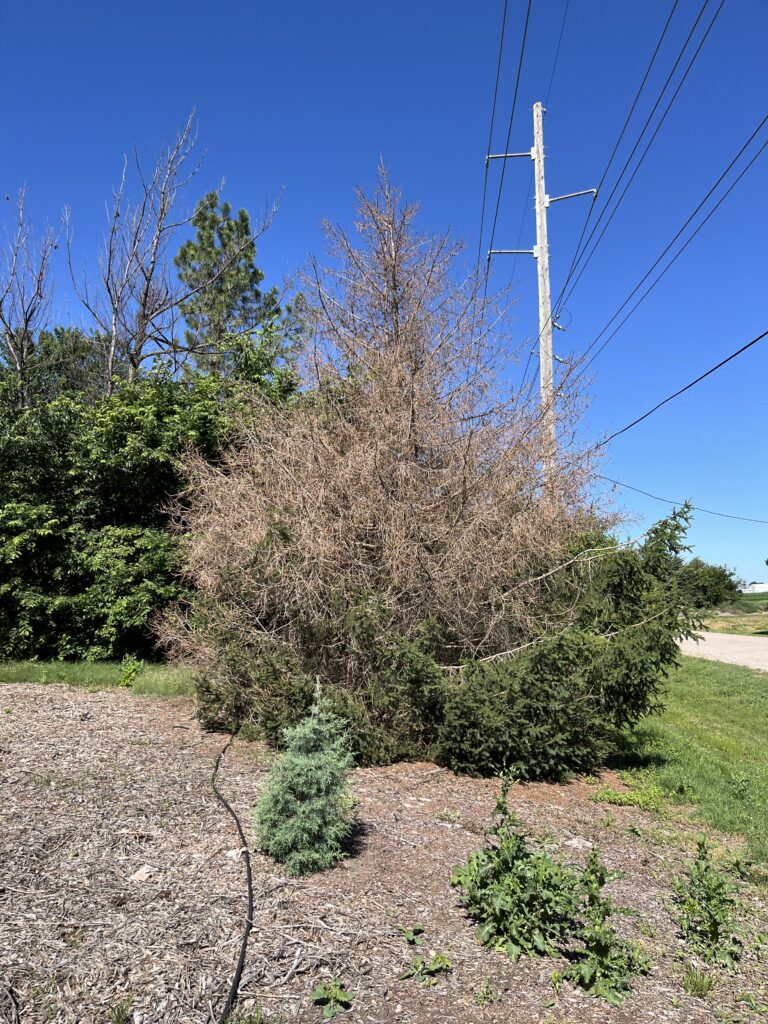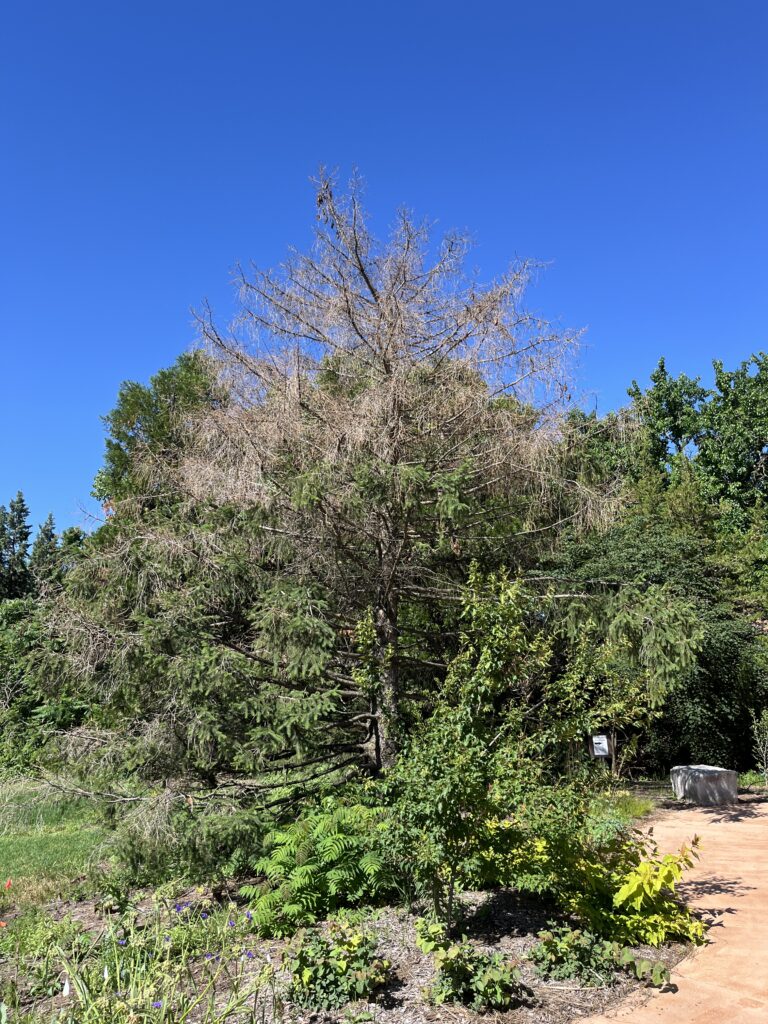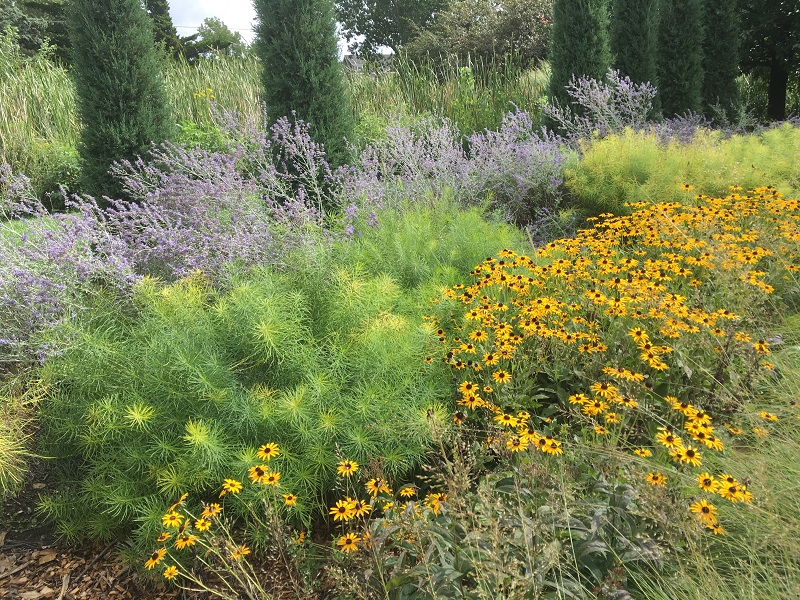As we edge closer to summer, I have been thinking about how we go about choosing plants for our yards. Certainly, we choose plants that we like aesthetically, but many of us also want to choose plants that help wildlife survive. Yet another reason for choosing a particular plant is its resiliency or persistency in the landscape. How does it fair during times of stress? (Because the Kansas climate can be very stressful!)
If you can’t stand the heat…
Last summer was really hard on a number of long established plants here at the Arboretum. We lost trees that were 40 years old. We lost perennials that we thought should be alright with a little supplemental watering. These plants were watered, but they just could not endure the stress of the summer heat and drought.

Now, we could lament the fact that we lost these trees, but I believe their demise was inevitable. They were not the best choice because of where they come from.
Take Colorado blue spruce as an example. It grows naturally in higher elevations, with regular afternoon showers, and cooler night time temperatures. Yes, the sun is intense in Colorado, but it can recover during the cooler nights. You bring that evergreen tree to Kansas and subject it to full sun, dry winds and night time temperature in the 80’s, it cannot recover what is lost during the day. Each day, it keeps getting beaten down more and more until it just gives up. We lost several tops of evergreen trees last year because the top half was just scorched off. We were watering them, but the water loss during the day was too great to overcome.
If at first you don’t succeed…
In Kansas, we mourn the loss of any tree. Trees in south central Kansas are a luxury. We love the shade or screening they provide. However, we have to keep in mind that our area was once all prairie. The only trees to be found were along creeks and swales that offered regular water. We are trying to grow trees in the much harsher prairie environment.
So think about your own landscape. Which plants are thriving and which are struggling? What plants have been difficult to keep going in their current location? Is there a certain plant in your yard that you worry about when it gets hot? You can keep trying to pamper that plant into the future but don’t be surprised when it all of a sudden doesn’t come back the next year.
With loss comes an opportunity to make a better plant choice. Do your homework and learn about plants that are adapted to our areas. There are recommended trees and shrubs for our area. Obviously, we promote native plants because of all the good things they do in our landscapes if properly situated.
One more thing…
I would also encourage you to diversify your landscapes with as many different plants as you can. Many different plants will attract many different types of wildlife. Don’t make it so hard on yourself. Choose plants that are resilient in the landscape.


